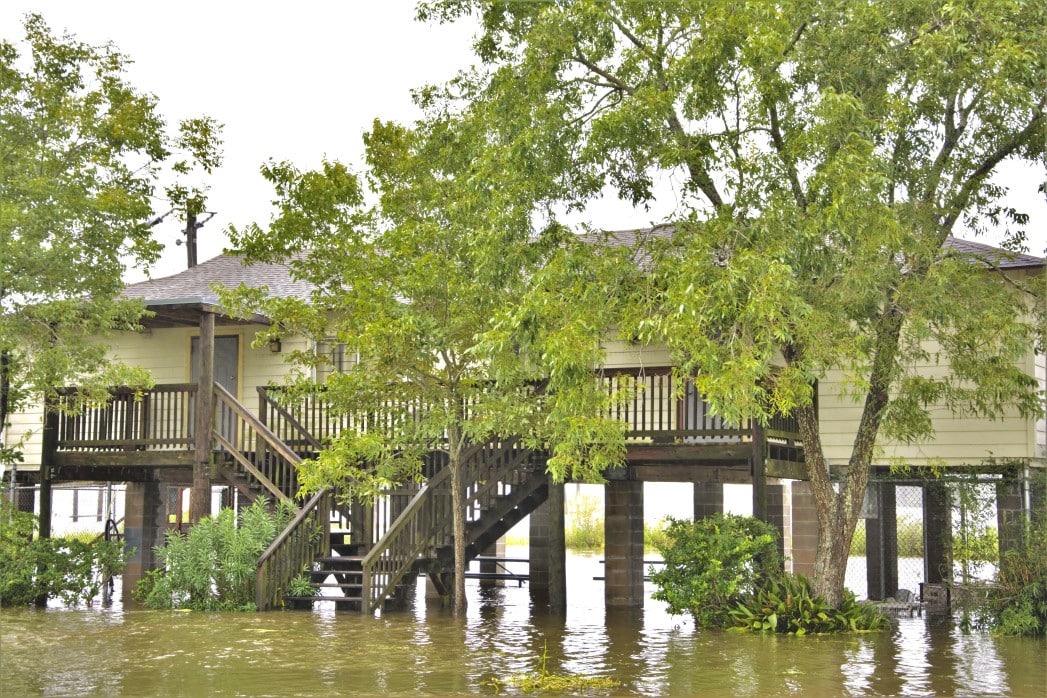A flood event is a worst-case scenario for many. Homeowners should take every possible precaution to prevent flooding and mitigate damage. Today, you have many options to prevent and reduce flood damage to your home.
Flood sensors are one of those options. These affordable devices alert homeowners to potential flooding and flood damage at the first sign of water. In this article, we explore how flood sensors help with flooding and give you peace of mind.
What is a Flood Sensor?
Flood sensors are in-home devices that signal an alarm when they’ve gotten wet. Most flood sensors work the same. They’re typically built with metal probes extending from the body of the alarm. When water touches those probes, the devices sense increased connectivity caused by the water. At that point, the alarm sounds to alert homeowners of the presence of water at the location of the flood sensor.
Flood sensors come in a variety of styles to match varying needs and budgets. High-end flood sensors measure humidity and temperature and work with your Wi-Fi. These sensors alert you to even slight variations in the conditions of your home. Other more economically priced sensors provide the basic function of sounding an alarm when they get wet.
Regardless of your budget or the bells and whistles you want for your flood sensors, the most important thing is that you have them in your home.
How Can a Flood Sensor Help with Flooding?
Every home has the potential to incur flood or water damage, even if the property isn’t located in a flood plain. Homeowners living in a flood zone should install water sensors in their homes. But they aren’t the only ones. Every homeowner or property owner should install flood sensors throughout the interior of their home.
Flood sensors are affordable, effective means to recognize leaks and flooding. Fast-acting flood sensors alert homeowners to the presence of water as soon as the device senses it. Whether you live in a flood-prone region or simply have appliances that use water in your home, you will benefit from the security and peace of mind delivered by flood and water sensors.
Where Should I Place a Flood Sensor?
You should position your flood sensors in places throughout the inside of your home, especially where water damage could occur without warning. Washing machines, hot water heaters, and other appliances can fail, leaving you with a sopping mess when you least expect it.
The following appliances pose a risk for leaks and water damage:
- Washing machines
- Dishwashers
- Refrigerators with ice makers and water dispensers
- Furnaces and boilers
- Toilets
- Sinks
- Hot water heaters
- Sump pump
- Fish tanks
When choosing where to place your flood sensor, consider positioning them near these potential problem areas. If your home was to incur flood damage caused by faulty hardware, it’s likely that the leak would originate from one of the appliances listed above.
Homeowners with basements should always install at least one sensor in the lower level of their home. Many basements are home to sump pumps, water heaters, and laundry equipment. If these appliances leak or fail, it could be hours before you go downstairs to discover the damage. Flood sensors will immediately alert you to any water leaking into your basement, allowing you to find the source of the problem and mitigate damage.
Keep in mind that many flood sensors are designed for one-time use. If your sensor activates, you’ll want to address the cause of the alarm and then replace the sensor with a new model.
Flood Sensors and Flood Prevention to Keep My Home Safe
Flood prevention is key to mitigating water damage and keeping crisis repair costs at a minimum. Performing regular maintenance around your home helps prevent leaks which can lead to serious flood damage. Check your appliance hoses and connections for weak or corroded spots.
In addition to scheduled and preventative maintenance, installing flood sensors are an effective method of flood prevention regardless of your home’s location. A flood sensor is the fastest way to alert yourself to water leaks or flooding inside your home. And the faster you know about flooding, the higher your chances of stopping water damage from progressing before you incur an irreparable loss.
Flood sensors are crucial tools for sustaining a safe, dry home. But as a homeowner, you can and should take other steps toward flood prevention. In some instances, a home might be on a property especially prone to flooding. If this is the case for you and your home, consider a house lift as a means to flood-proof your home.
Lifting your house above its foundation significantly reduces the likelihood that you’ll have to deal with flood damage in your home. DeVooght House Lifters has been lifting and relocating homes in flood-prone areas for decades. Our team of experienced, seasoned experts can walk you through the process for a home lift, detailing the steps required and the benefits you reap when you choose to work with us.
Conclusion
Flood sensors are low-cost tools that can save you thousands of dollars in the long run. By installing flood sensors now, you benefit from the peace of mind that comes from knowing you’ll be alerted immediately to leaks or flooding in your home.

